Blog
Leveraging Kanban's Data-Driven Insights for Strategic Success24 Jul 2024

The ability to make informed decisions about your business is crucial to not only outcompeting your rivals but simply to staying afloat. While turning to data-driven decision-making to refine your strategies, improve efficiency, enhance performance, and direct attention to the right factors at the right time is necessary, the way you gather information about the process' health and team performance leaves you a fair bit of freedom. Here is where you stand a chance to take active control over what and how you analyze, and what tools you give yourself to influence future performance.
A powerful technique for work management and analysis that facilitates an informed approach to performance monitoring and modifying is Kanban. Well-known in project management and workflow optimization, the Kanban method offers robust mechanisms for collecting and analyzing process and performance data, becoming an invaluable asset for making informed business decisions.
Understanding the Kanban method
The Toyota company started using Kanban in the 1940s to manage the restocking of parts and limit the costs associated with an overflowing inventory. You can learn more about how today's Kanban came to be in this article. The Kanban approach centers on visualizing work, limiting work-in-progress (WIP), and improving flow. By using Kanban boards — visual representations of tasks and their progress — teams can better manage their workflows, effortlessly identify bottlenecks, and streamline processes. Each card on a Kanban board stands for a single task, while the board's columns represent different stages of the workflow, such as Planned, In Progress, and Complete.
Kanban boards can take the physical form of sticky notes on a whiteboard with drawn-on columns, or teams can use ready-made boards provided by web-based services such as kanbantool.com. From the standpoint of analytical performance metrics collection and viewing alone, a cloud-based board has more to offer than a physical board.
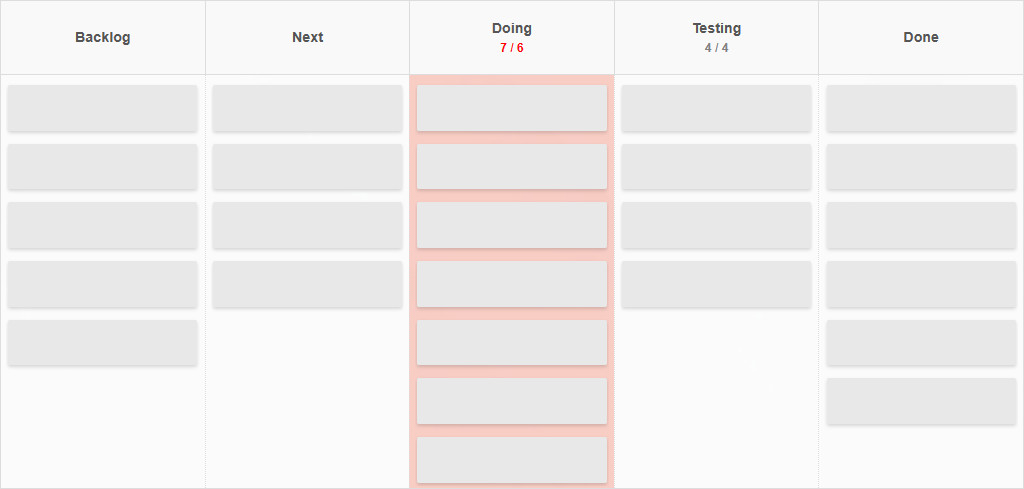
Kanban as a data collection tool
Thanks to the visual and structured nature of a web-based Kanban board, it inherently generates valuable data about work processes. The following are a few ways in which you can use Kanban to collect actionable process performance information:
1. Workflow status at a glance
When a team follows the single rule of updating the board with task completion state changes in real-time, then - without any additional analytical work - their board provides clear visibility into the status of tasks, it can also show which team member does what at this time, and if there is an evident block stopping the flow of the process. Just visualizing what everyone is doing and planning for the next few days can sometimes be already far more insightful than gathering everyone for a status and planning meeting.

2. Automatically generated metrics
Besides displaying the tasks and their current completion status, most web-based Kanban boards also provide automated metrics, built around the volume and status of tasks on the board, or their movements across time.
The typical process metrics are:
- Cycle time
The active time it takes the team to complete a task.
What does it tell you? It measures how quickly the team works. - Lead time
The total time a task spends inside the process from creation to completion - including all waiting stages.
What does it tell you? It measures how efficient, swift, or bumpy the entire process is.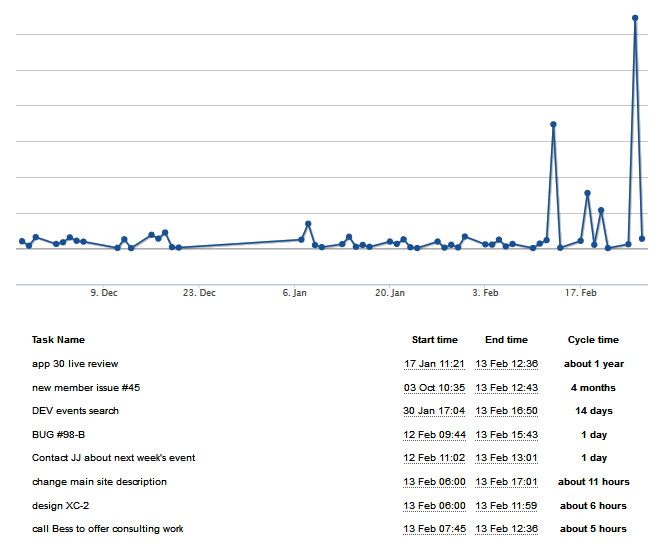
- Cumulative flow
The overall gathering of patterns and volume of tasks filling up the process over time.
What does it tell you? It shows if there are any patterns or anomalies in how tasks have been flowing through the system with time.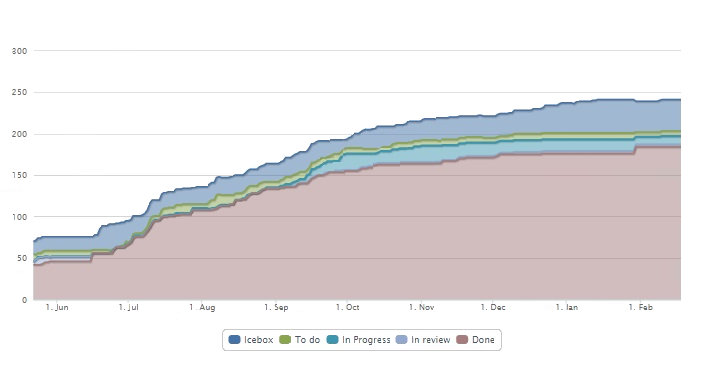
Kanban Tool boards give your team a few additional process metrics:
- Time report
Measuring precisely how much time individual team members have spent on individual tasks, boards, columns, or rows of the board (swimlanes).
What does it tell you? It measures precise working time per task and worker.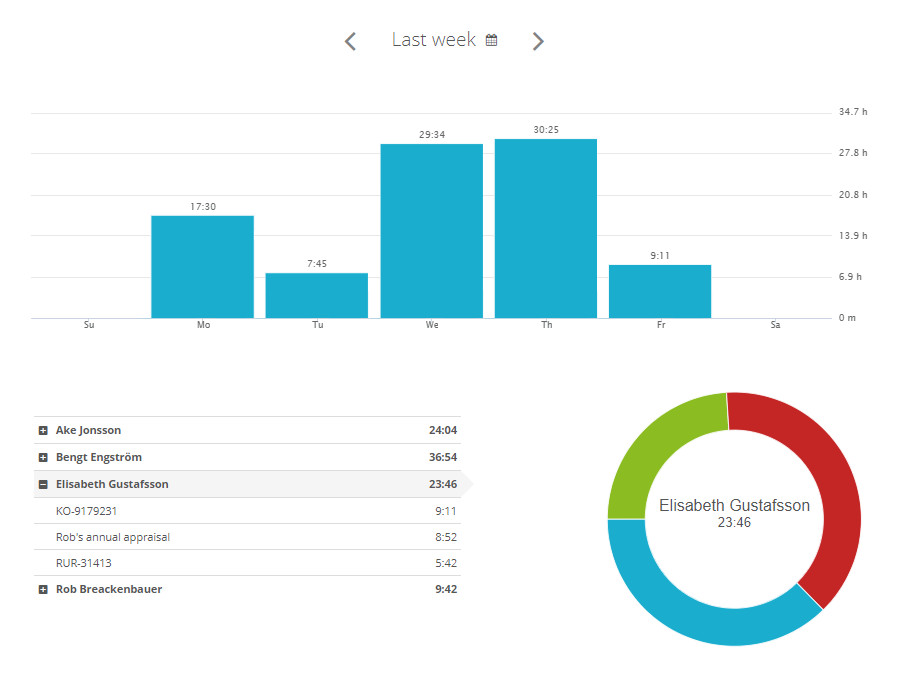
- Breakdown chart
Offering variable splits of the task information to show distribution by a chosen criteria, e.g., difficulty, priority, worker assignment, or a custom data field.
What does it tell you? It presents the distribution of tasks by a chosen criteria.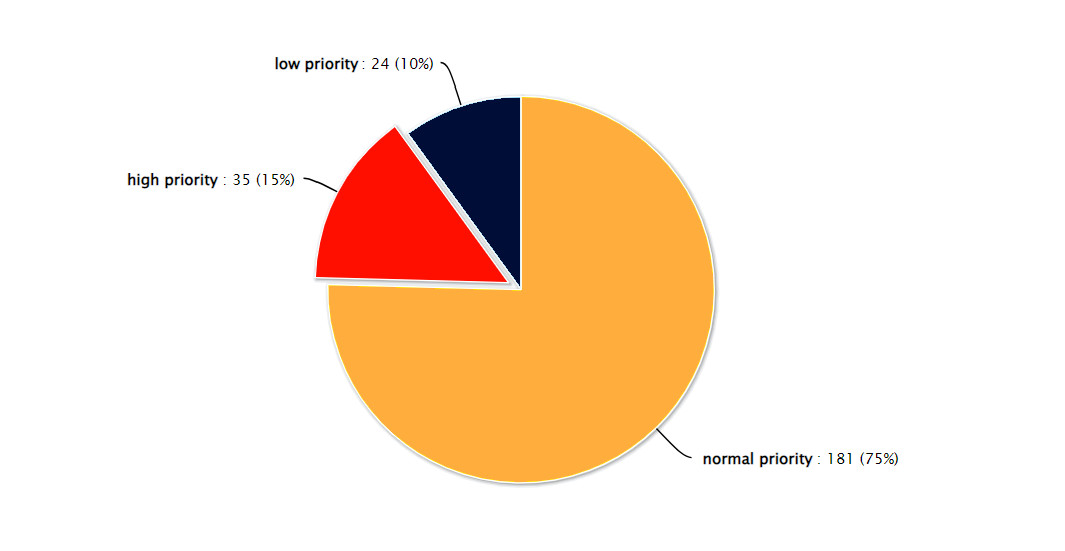
3. WIP limits monitoring
By keeping tabs on the agreed work-in-progress limits, your team gleans insight into how various task loads impact their efficiency and, through that, can identify optimal workload capacities. Noting the change a WIP limit alteration makes to how work is done helps in balancing the workload, moves tasks towards completion faster, prevents process bottlenecks, and minimizes the risk of employee burnout at the same time.
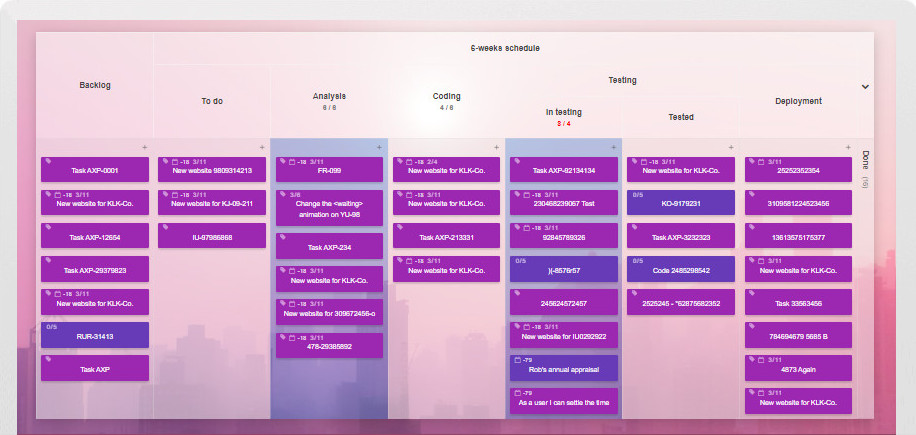
4. Throughput
The term describes the number of tasks completed within a specific period, forming another critical metric trackable when using Kanban systems. Analyzing throughput data changes over time can immensely help your team understand what may impact their productivity rates, enabling them to make adjustments.
5. Individual tasks breakdown
Each Kanban Tool card can contain detailed information about the work item, going much further than the work description, assignment, or due date - e.g., it can refer to task difficulty, estimated time, dependencies, included to-do lists, or milestone dates. Analyzing this data can help grasp the nature of work, shed light on the accuracy of completion estimates, and foresee the impact of task interconnectivity on the entire project timelines.
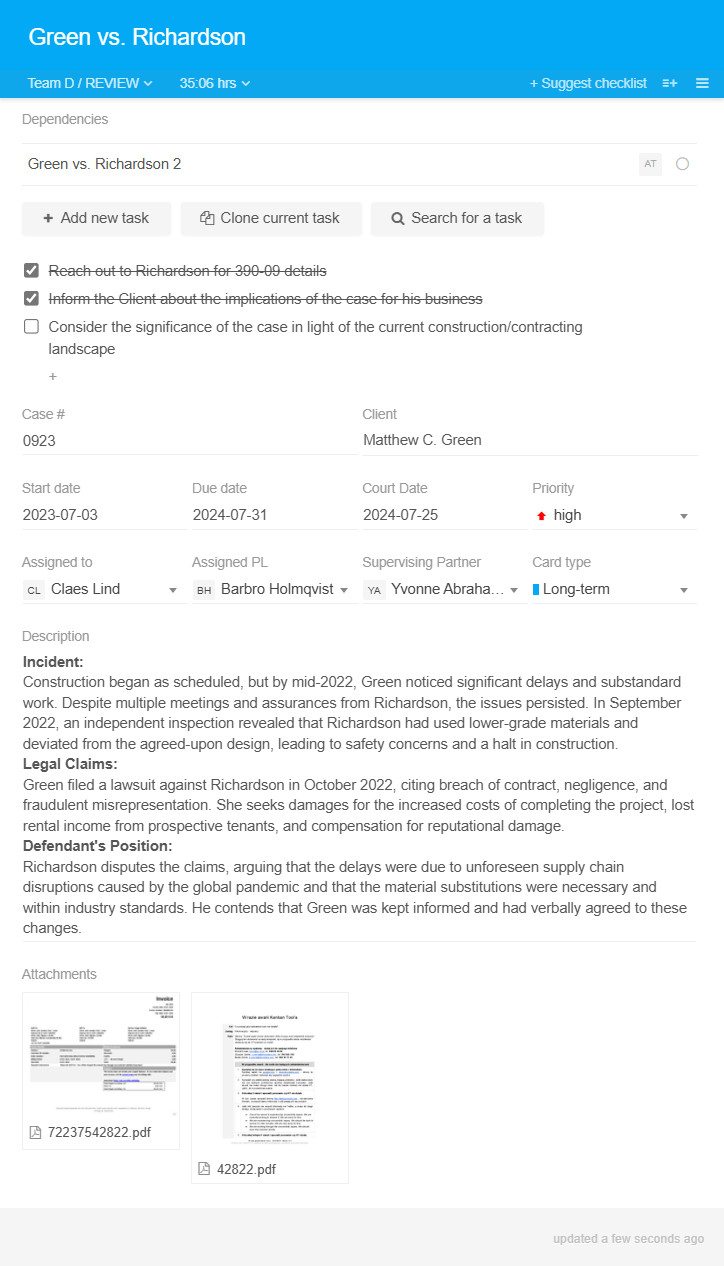
Analyzing Kanban data for decision-making
Process information collected through the analysis of a Kanban-centered process can lead to insights driving strategic decision-making. Your business can leverage the data for:
Identifying bottlenecks and inefficiencies:
By analyzing lead and cycle times you can pinpoint workflow stages in which tasks are delayed. Understanding those bottlenecks will enable your team to implement targeted improvements, such as reallocating resources or refining the process to increase efficiency.
Predicting outcomes and planning resources:
You can use historical process throughput data to forecast future performance and set achievable goals. This predictive capability is valuable for resource planning, allowing you to allocate manpower and other resources more effectively to meet demand, maximizing your business reliability and stability.
Improving team performance:
Regular analysis of WIP limits and throughput helps maintain optimal workload levels, ensuring teams are neither underutilized nor overburdened. This balance not only boosts productivity and predictability but also enhances employee morale.
Data-driven continuous improvement:
Kanban encourages a continuous improvement culture. By consistently reviewing and analyzing workflow statistics, your business can implement iterative changes that lead to sustained performance enhancements over time.

How to implement a data-driven Kanban process?
To effectively use Kanban to aid in data-driven decision-making, consider following these steps:
- Set clear objectives: Define the goal you want to achieve with your Kanban implementation, be that reducing cycle time, increasing throughput, or improving task completion forecasting.
- Build a Kanban board: Use an intuitive, digital system like Kanban Tool to take advantage of the automated data tracking and reporting features, as well as additional functionality centered on teamwork improvement and simplification.
- Analyze data regularly: Establish a routine for data collection and analysis that fits your internal process pace.
- Involve the team: Encourage a culture of transparency and continuous feedback, making sure all team members understand the importance of data for the process's health and planning, make it clear that everyone is welcome to get involved in the data gathering and analysis.
- Make informed decisions: Finally, use the insights gained from your Kanban process data analysis to inform strategic decisions. But don't just do it once - review the impact of your decisions at regular intervals and adjust as needed to ensure continuous improvement or Kaizen.

Summing up
We hope you can now see that Kanban is more than just a workflow management method; when used thoughtfully, it can become an impactful data collection and analysis system to drive informed decision-making in businesses. By leveraging the performance metrics generated through Kanban boards, your business can identify inefficiencies, predict outcomes, effectively plan resources, and continuously improve your workflows. Embracing Kanban for data-driven decision-making is a strategic move that can lead to enhanced productivity, better resource utilization, and ultimately, greater business success.
Sign up for a 14-day free trial
to test all the features.
Sign up now and see how we can help
your organization deliver exceptional results.